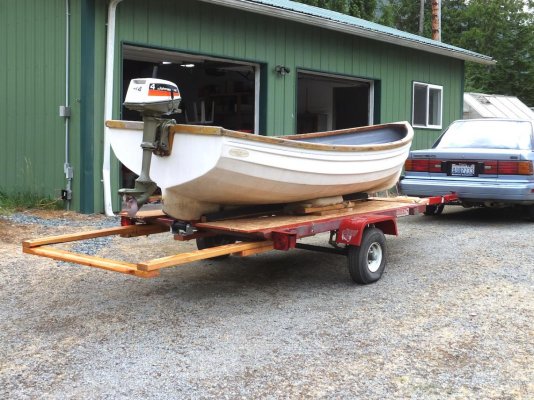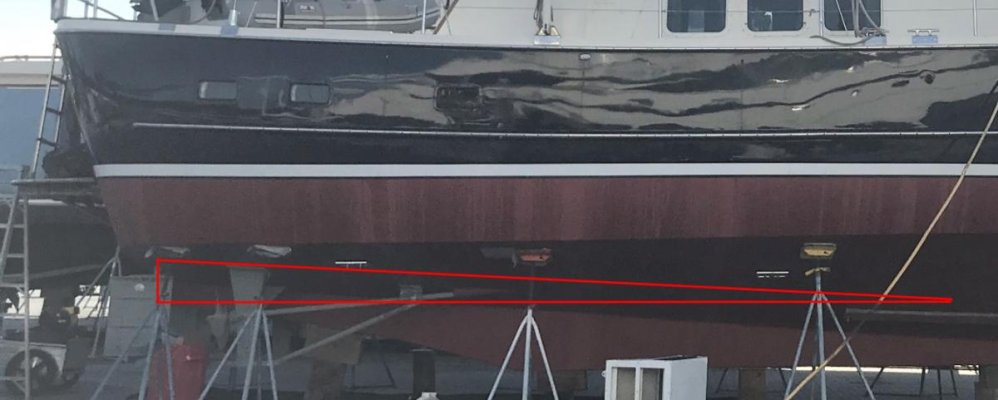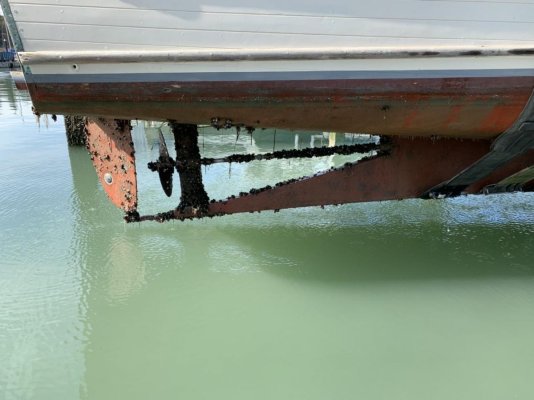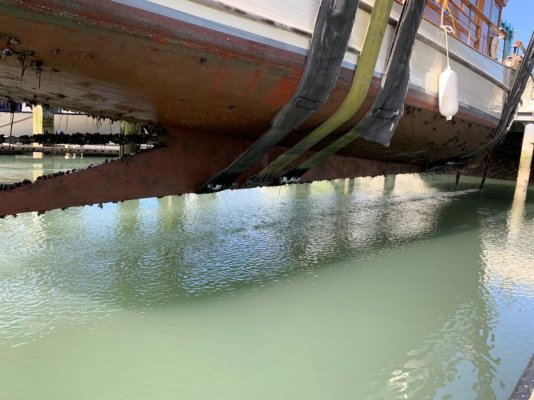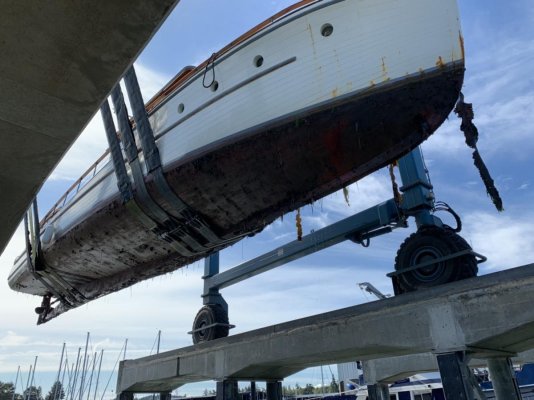Nomad Willy
Guru
Here is a FD hull. My 12 foot rowboat.
You can see the WL on the keel. This was unloaded. But w a full load the transom would still be out of the water.
But more importantly the aft part of the hull rises up as the hull goes aft.
Quarter beam is 1/2 of the half beam. In-between the keel and the outer edge of the boat. 1/4 beam is in between the keel and the outside of the hull.
The QBBL is a fore and aft line on the bottom of the boat from about amidships all the way aft.
Planing hulls have the quarter beam line as horizontal. FD hulls are like my rowboat below. SD hulls are in-between. Shallow QBBL. Some FD hulls have a very small amount of transom submerged (like 5-10%) but they have a somewhat steep QBBL. SD hulls have on average 1/2 of their transom submerged at rest. There are SD hulls in trawler form that have a O degree QBBL but have so much weight and keel drag they are called SD. They can't plane. And they surely aren't FD.
There are numbers that can probably be found on boat design.com. Numbers identifing what angles apply to FD and what numbers apply to SD. I don't know what they are.
You can see the WL on the keel. This was unloaded. But w a full load the transom would still be out of the water.
But more importantly the aft part of the hull rises up as the hull goes aft.
Quarter beam is 1/2 of the half beam. In-between the keel and the outer edge of the boat. 1/4 beam is in between the keel and the outside of the hull.
The QBBL is a fore and aft line on the bottom of the boat from about amidships all the way aft.
Planing hulls have the quarter beam line as horizontal. FD hulls are like my rowboat below. SD hulls are in-between. Shallow QBBL. Some FD hulls have a very small amount of transom submerged (like 5-10%) but they have a somewhat steep QBBL. SD hulls have on average 1/2 of their transom submerged at rest. There are SD hulls in trawler form that have a O degree QBBL but have so much weight and keel drag they are called SD. They can't plane. And they surely aren't FD.
There are numbers that can probably be found on boat design.com. Numbers identifing what angles apply to FD and what numbers apply to SD. I don't know what they are.
Attachments
Last edited:

